Theme Parks & Themed Entertainment
The post-Christmas origin of character dining at Walt Disney World
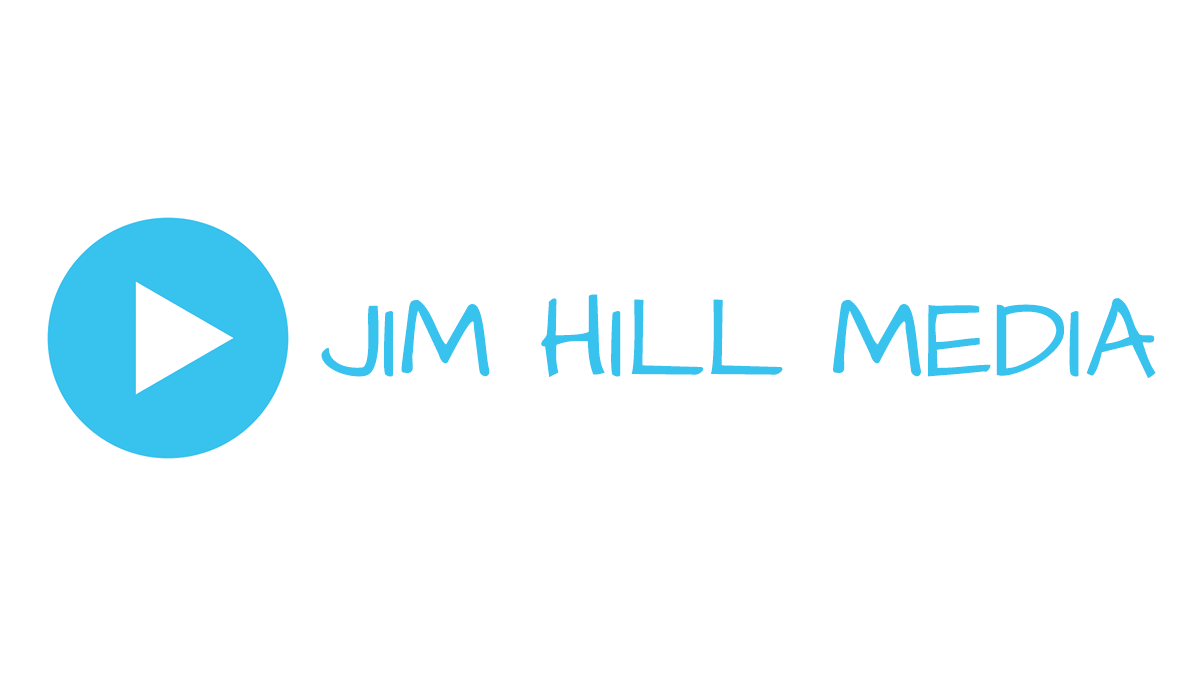
It's one of those must-do aspects of a Walt Disney World
vacation. Especially if you've got young kids. Character dining. That pricey breakfast,
lunch or dinner which is periodically interrupted as Disney characters come by
your table, pose for pictures and sign autographs.

Copyright Disney Enterprises, Inc. All rights reserved
Given that character dining is such a hugely popular – more
importantly, profitable — component of
the WDW vacation experience nowadays (Don't believe me? Then just check out those
lines of Guests outside of the Crystal Palace at the Magic Kingdom, Akershus
Royal Banquet Hall at Epcot, Hollywood & Vine at Disney's Hollywood Studios
and Tusker House Restaurant at Disney's
Animal Kingdom. Likewise that queue of customers outside of Chef Mickey's at
Disney's Contemporary Resort, the Cape May Cafe at Disney's Beach Club Resort
as well as 1900 Park Fare at Disney's Grand Floridian Resort & Spa), it
might surprise you to learn that the Disney World version of character dining
didn't get its start inside of a theme park and/or at one of the resorts. But –
rather – over at Lake Buena Vista in the shopping village.
Or – for that matter – that the first "character" which WDW
visitors had the chance to dine with wasn't Mickey Mouse or Winnie the Pooh or
any of the Disney Princesses. But – rather – Santa Claus.
It's kind of an interesting tale. But in order to properly
reveal the origins of character dining at Walt Disney World, I must first give
you a bit of backstory on that corner of the Resort which used to be known as the
Lake Buena Vista Shopping Village.
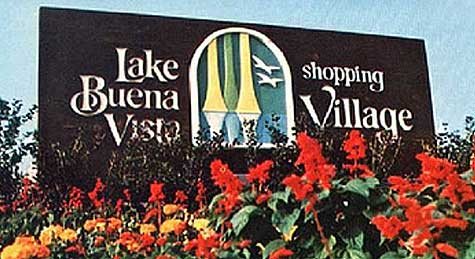
Copyright Disney Enterprises, Inc. All rights reserved
You see, back in the early 1970s, the folks in charge of
Walt Disney Productions wanted to make sure that the "Florida Project" truly was
an all-inclusive vacation resort. So it wasn't enough that Walt Disney World
had the Magic Kingdom, three themed hotels, two championship golf courses, a
campground, horseback riding, boating, water-skiing, bass fishing and the like.
The WDW Resort also had to have its own stand-alone retail & dining
district.
Mind you, construction of the Lake Buena Vista Shopping
Village didn't go forward just because the Company was looking for new &
different ways to get tourists to open their wallets. No, back in the early
1970s, Mouse House managers still had hopes that they'd someday be able to
deliver on Walt's last & greatest dream (i.e. pull a genuine city-of-the-future
up out of the swamps of Central Florida). And by constructing some sort of
commercial center out by what was then-known as Motor Inn Plaza … Well, that
seemed like kind of a smart intermediate step towards the Company's ultimate
goal of building Epcot-the-city.
Still, Disney being Disney … The Lake Buena Vista Shopping
Village couldn't just resemble the mall that folks had back at home. It had to
have a distinctly different take on the shopping experience. Much is the same
way that a Disney theme park was distinctly different from your average
regional amusement park.
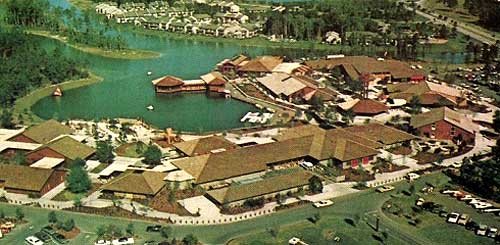
Copyright Disney Enterprises, Inc. All rights reserved
Which is why – rather than go with the standard indoor mall
floor plan — the Imagineers opted instead to build WDW's retail & dining
district outdoors along the shores of Lake Buena Vista. More to the point, that
this complex of 32 boutique and handicraft shops would be built out of
weathered wood & brick. And as shoppers wandered among these cedar-shingled
structures, they could then peer in through windows and watch as old-world
craftsmen cut crystal, shaped clay pots and engraved gold.
You get the idea yet? What Disney was trying to with the
Lake Buena Vista Shopping Village was build the anti-mall. Create a unique
dining & retail experience that would not only appeal to WDW visitors but
also draw in leisure shoppers from all over the Central Florida region.
That was the plan, anyway. But when the Lake Buena Vista
Shopping Village opened on March 22, 1975, it quickly became apparent that
something was amiss. For while the Guests who were actually staying at the
Dutch Resort Hotel, Howard Johnson's, The Hotel Royal Plaza and Travelodge
Tower would schlep across the street from Hotel Plaza and then for check this
place out … That wasn't exactly the case for people staying at the
Contemporary, the Polynesian Village, the Golf Resort and Fort Wilderness
Campground. Or – for that matter – most of the day guests who were visiting the
Magic Kingdom.
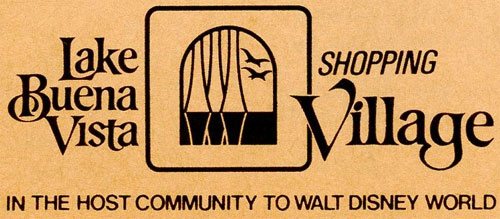
Copyright Disney Enterprises, Inc. All rights reserved
In fact, the Lake Buena Vista Shopping Village was capturing
such a small share of WDW Resort guests and day visitors to the theme park that
– in late 1975 / early 1976 – the Company commissioned a survey about this
shopping & dining district. And what they discovered back then really
startled them.
The biggest problem that the Lake Buena Vista Shopping
Village faced was that most tourists didn't link the Buena Vista name with Walt
Disney World. So when they heard "Lake Buena Vista Shopping Village," these
people thought that it was just another off-property attraction like SeaWorld
or Church Street Station. But worse than that, those WDW Resort guests who did
make a special trip over the Shopping Village to experience these artfully
designed collection of boutiques & restaurants said that they wouldn't be returning
anytime soon because – to be blunt – it just wasn't Disney enough.
So to quickly address these issues, the suits in Burbank
first decided to change the name of WDW's dining & retail district. Which –
in late 1976 / early 1977 – went from being the Lake Buena Vista Shopping Village
to the Walt Disney World Village. They also made sure that every new ticket
book sold for the Magic Kingdom then featured an ad that urged theme park goers
to " … Visit the other side of the World … You haven't seen the whole World
until you've visited Walt Disney World Village at Lake Buena Vista. Open daily
10 to 10."
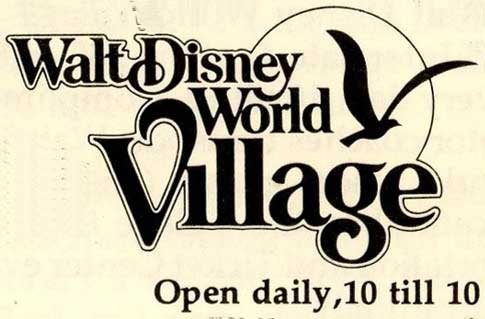
Copyright Disney Enterprises, Inc. All rights reserved
And to counter Guest complaints that " … this shopping
village just isn't Disney enough," the Imagineers then decided to build an
iconic piece of Disneyland Park and WDW's Magic Kingdom. Which was a recreation of a three-decked Mississippi River
stern-wheeler that would then be parked right along the shore of Buena Vista
Lagoon. Which – the wizards of WED hoped – would become the new focal point of
the shopping village.
And Disney spared no expense when it came to the
construction this 150-ton vessel (which – truth be told – wasn't a steamboat at
all. But – rather – a restaurant complex designed to look like a boat which
then sat on this submerged concrete foundation). With two 84-foot smoke stacks,
its 22-by-36-foot churning paddle wheel as well as its gingerbread railings, this
steamboat – at 220 feet long by 62 feet wide – was twice the size of the
paddle-wheelers which cruised around the Rivers of America at the Magic Kingdom.
And as for those " … this shopping village isn't Disney
enough" complaints … Well, that's why the Imagineers opted to name this faux
steamboat the Empress Lilly after Walt's wife, Lillian. In fact, on May 1,
1977, Lillian herself took part in the gala private christening ceremony for
this new WDW restaurant complex. And as she toured this building with Donn Tatum,
Mrs. Disney Truyens supposedly commented on the antique 24-foot-table inlaid
parquet table that she found in the Texas Deck Lounge. Which had reportedly
been chosen by Walt himself to serve as the dining table for the Disney family
suite that was supposed to be built over "Pirates of the Caribbean" in
Disneyland's New Orleans Square area.
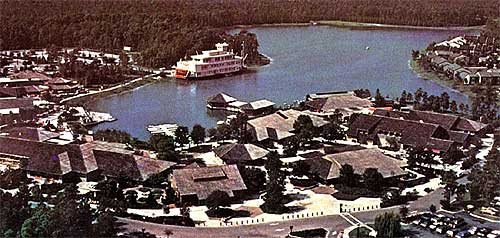
Copyright Disney Enterprises, Inc. All rights reserved
And while the name change as well as the addition of the
Empress Lilly did compel more WDW Guests to go visit the Walt Disney World
Village, this retail & dining district still struggled to catch on with
Central Floridians. So to draw even more leisure shoppers from the region,
Disney was then forced to start staging all sorts of special weekend-long
events down along the shore of Lake Buena. The Boat Show, The Car Show, The
Festival of the Masters. Anything that Mouse House managers could think of as a
possible way to lure in additional local customers in.
And given that – at least back in the mid-1970s, anyway –
the weeks leading up to the holidays were an especially slow time for the Walt
Disney World Resort … Well, that's why the folks who ran WDW's shopping village
began staging the "The Glory and Pageantry of Christmas" there. Which was this
Renaissance-style, live Nativity scene that was staged right under the
Captain's Tower right at the very heart of this shopping & dining district.
Given that we now live in an age when people will actually go
to court to prevent a crèche from being placed on public property, it must seem
kind of bizarre to hear that – right up until the mid-1990s – that this
traditional retelling of the Christmas story was staged during the month of
December right on WDW property. And the "The Glory and Pageantry of Christmas"
was a pretty elaborate affair, featuring 39 cast members and live animals. Not
to mention the Dickens Carolers from the Magic Kingdom, which – between scenes
– performed such decidedly non-secular tunes as "O Little Town of Bethlehem,"
"Away in a Manger," "Hark, the Herald Angels Sing" and "We Three Kings."
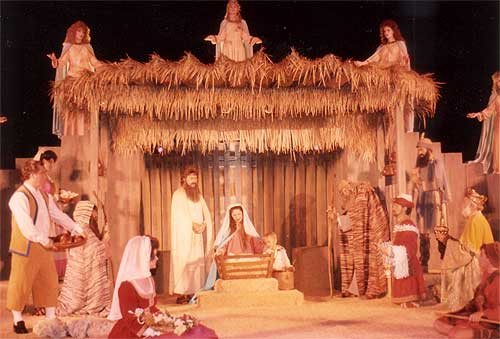
The finale of "The Glory and Pageantry of Christmas" living Nativity at the Walt Disney
World Village. Copyright Disney Enterprises, Inc. All rights reserved
"The Glory and Pageantry of Christmas" became so popular
with Central Floridians that there were nights where – in order to deal with
the crowds – the Walt Disney World Village was forced to present three
performances of this living Nativity nightly, once at 6, 7:30 & 9 p.m.
Which was great when it came to bringing nighttime shoppers
into WDW Village during the month of December. But as for the early morning
hours, Disney World's shopping village genuinely struggled when it came to
bringing in customers. Or at least it did until one enterprising Mouse House
manager decided to borrow a bit of holiday magic from the local mall.
As Disneyland president George Kalogridis recounted at his
"A Word from the President" presentation at D23's Destination D: Disneyland '55
event in September of 2010, one member of the WDW Shopping Village's management
team noticed that several Orlando area malls were doing extremely well with
their "Have Breakfast with Santa" promotions. So why couldn't Disney stage a similar
sort of event to convince shoppers to come out to Lake Buena Vista during the
early morning hours?

As this image capture from "Holiday Time at Disneyland" (i.e. the "Wonderful World of
Color" episode that originally aired on December 23, 1962) proves, Walt and Santa
go way back. Copyright Disney Enterprises, Inc. All rights reserved
So – just as a test in December of 1977 – the Walt Disney
World Village put together a "Have Breakfast with Santa" promotion. Where kids
& their parents would come on board the Empress Lilly (which was completely
open and available at that time of day. Given that – at this point in its
operating history, anyway – this riverboat restaurant wasn't serving breakfast.
It only served lunch & dinner) and enjoy some scrambled eggs, bacon and
pancakes while Santa slowly worked his way around the Promenade Deck and
visited with every child at every table.
To hear Kalogridis tell this story, the "Have Breakfast with
Santa" promotion was a huge seasonal success. Resulting in huge foot traffic
through the stores. More importantly, an overall increase in sales at the Walt
Disney World Village at a time of day when this retail & dining area was
usually dead.
But then December gave way to January. And as the morning
foot traffic and per-store sales slumped to their usual pre-holiday levels,
Walt Disney World Shopping Village managers wondered if there was a way that
they could perhaps replicate the "Have Breakfast with Santa" phenomenon by –
say – giving WDW Guests the chance to dine with some of their favorite Disney
characters.

Copyright Disney Enterprises, Inc. All rights reserved
Which is why – in February of 1978 – the WDW Shopping
Village began offering a "Have Breakfast with Snow White and Friends" event aboard
the Empress Lilly. Which immediately became hugely popular with Resort
visitors. So much so that – at the height of its popularity – the
eventually-renamed "Breakfast a la Disney" was selling out three seatings
daily.
Which is why – in order to deal with demand – Walt Disney
World then began offering character dining at other venues around the Resort.
Among them the Minnie's Menehune Breakfast at the Papeete Bay Veranda at the
Polynesian Village and Melvin the Moose's Country Breakfast Jamboree at Fort
Wilderness's Pioneer Hall. And with the success of these spin-off character
breakfast events, it was only a matter of time before the Parks got involved.
And now that character dining is a standard feature at every
WDW theme park and at virtually every Resort on property … Well, to me, anyway,
it just seems a little less special.
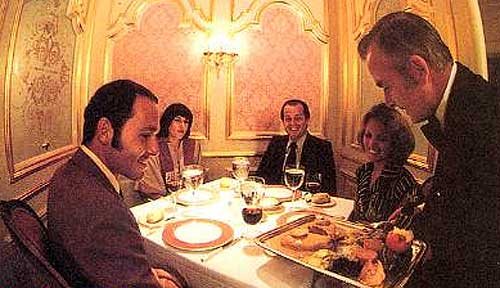
French-style service in the Louis-the-XV -themed Empress Room.
Copyright Disney Enterprises, Inc. All rights reserved
But – then again – the entire Walt Disney World Resort has
seemed like a less special place since the Empress Lilly was closed on April
22, 1995 and then gutted to make way for Fulton's Crab House … If you ever got
the chance to dine in the Empress Room with its glimmering chandeliers, as the attentive
staff there served gourmet fare on special made-to-order china … Well, that was
an evening that you'd never ever forget.
Likewise the great Dixieland music that you used to be able to hear played nightly
inside of the Baton Rouge Lounge. Or those Monday Night Huddle events. Where Tampa
Bay Buccaneers players would — every Monday evening from early September through
late December – come on board the Empress Lilly riverboat restaurant and then review
the previous day's football game, showing play-by-play films as well as responding
to questions from the crowd.
Yeah, the Lake Buena Vista Shopping Village / Walt Disney
World Village may have not been hugely successful as Walt Disney Productions
officials had hoped that it would be in the mid-to-late 1970s (And one wonders
what would have happened if Card Walker had ever followed through with his
post-Epcot-opening plan. Which was to add a third loop to the Resort's monorail
system, which would have then allowed visitors to that futuristic theme park to
travel over to the Walt Disney World Village & Hotel Plaza area and then
disembark for a bit of shopping & dining).
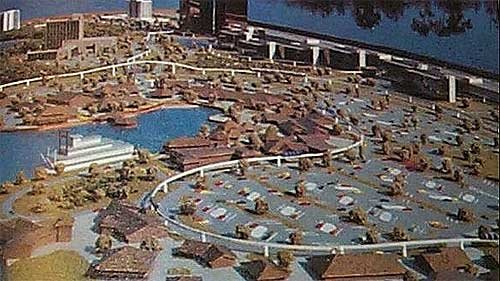
A model of the future expansion of WDW's Hotel Plaza area. Please note the proposed
monorail loop that would have not only serviced these hotels but also the Walt Disney
World Village. Copyright Disney Enterprises, Inc. All rights reserved
Anyway … So if you or your family has ever enjoyed a bit of
character dining while vacationing at the Walt Disney World Resort, you have
the managers of the Lake Buena Vista Shopping Village / Walt Disney World
Village to thank. Who were only looking for additional ways to make the cash registers
ring at WDW's dining & retail district after the holidays when they then
came up with the idea of charging Guests to eat breakfast on board the Empress
Lilly with Snow White & friends.
Which seems like a suitable post-holiday story, don't you
think?
Anyway … How many of you out there also have fond memories
of the Empress Lilly and/or have stories to share about memorable character
encounters that you & family members may have had at a "Breakfast A La Disney"
?

Copyright Disney Enterprises, Inc. All rights reserved
Your thoughts?
Tis the season, folks. So as 2011 winds down, if you've enjoyed what you've read on JHM over the past year, please feel free to throw a little something-something in
this site's new tip jar.
Television & Shows
The Untold Story of Super Soap Weekend at Disney-MGM Studios: How Daytime TV Took Over the Parks
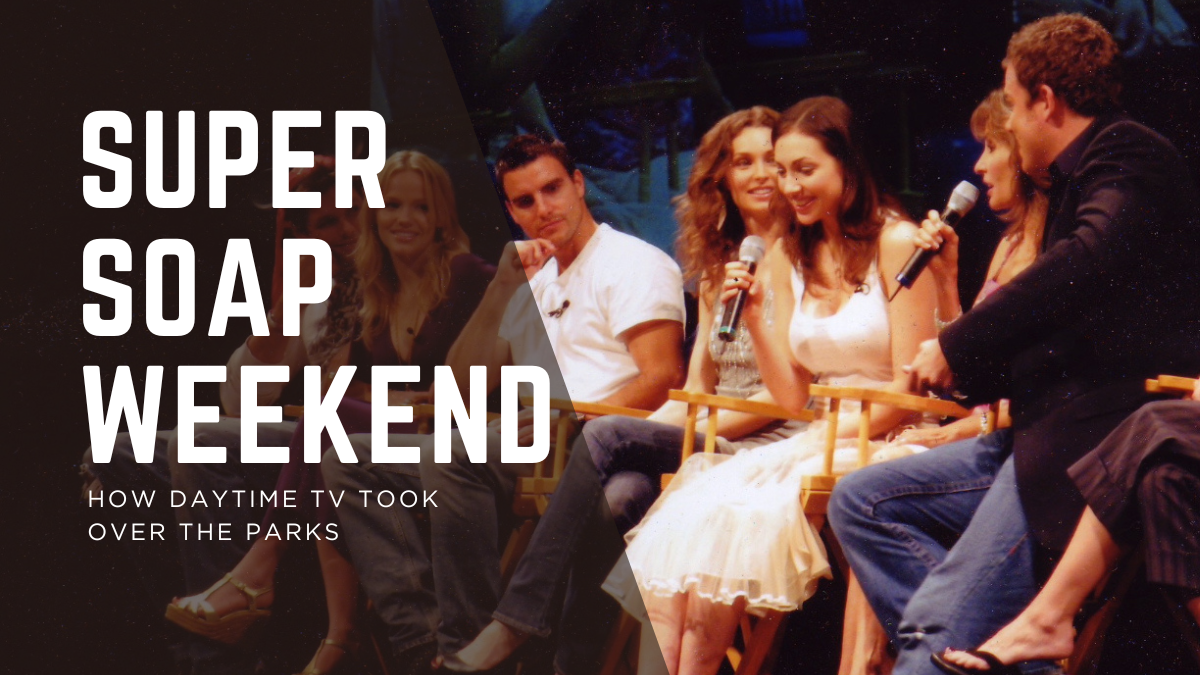
A long time ago in a galaxy that … Well, to be honest, wasn’t all that far away. This was down in Florida after all. But if you traveled to the WDW Resort, you could then experience “Star Wars Weekends.” Which ran seasonally at Disney’s Hollywood Studios Disney World from 1997 to 2015.
Mind you, what most folks don’t remember is the annual event that effectively plowed the road for “Star Wars Weekends.” Which was “Super Soap Weekend.” That seasonal offering — which allowed ABC soap fans to get up-close with their favorite performers from “All My Children,” “General Hospital,” “One Life to Live” and “Port Charles” — debuted at that same theme park the year previous (1996).
So how did this weekend-long celebration of daytime drama (which drew tens of thousands of people to Orlando every Fall for 15 years straight) come to be?
Michael Eisner’s Daytime TV Origins and a Theme Park Vision
Super Soap Weekend was the brainchild of then-Disney CEO Michael Eisner. His career in media began with short stints at NBC and CBS, but it truly took off in 1964 when he joined ABC as the assistant to Leonard Goldberg, who was the network’s national programming director at the time.
Eisner quickly advanced through the ranks. By 1971, he had become Vice President of Daytime Programming at ABC. That meant he was on the scene when One Life to Live joined the lineup in July 1968 and when All My Children made its debut in January 1970. Even after being promoted to Senior Vice President of Prime Time Programming in 1976, Eisner stayed close to the daytime division and often recruited standout soap talent for ABC’s primetime shows.
Fast forward nearly two decades to July 31, 1995. The Walt Disney Company announced that it would acquire ABC/Cap Cities in a $19 billion deal. Although the acquisition wasn’t finalized until February 1996, Eisner was already thinking ahead. He wanted to use the stars of All My Children, One Life to Live, and General Hospital to draw people to Disney’s theme parks.
He had seen how individual soap stars were drawing huge mall crowds across America since the late 1970s. Now he wanted to bring dozens of them together for something much bigger.

Super Soap Weekend Takes Over Disney-MGM Studios
The very first Super Soap Weekend was announced in June 1996, just a few months after the ABC deal closed. The event was scheduled for October 19 and 20 at Disney-MGM Studios and was a massive success.
The weekend featured panel discussions, autograph sessions, and photo opportunities with the stars of ABC’s daytime dramas. Thousands of fans packed the park for the chance to meet their favorite actors. Due to the overwhelming response, the event became an annual tradition and was eventually moved to Veterans Day weekend each November to better accommodate attendees.
Longtime fans like Nancy Stadler, her mom Mary, and their close friend Angela Ragno returned year after year, making the event a personal tradition and building lifelong memories.
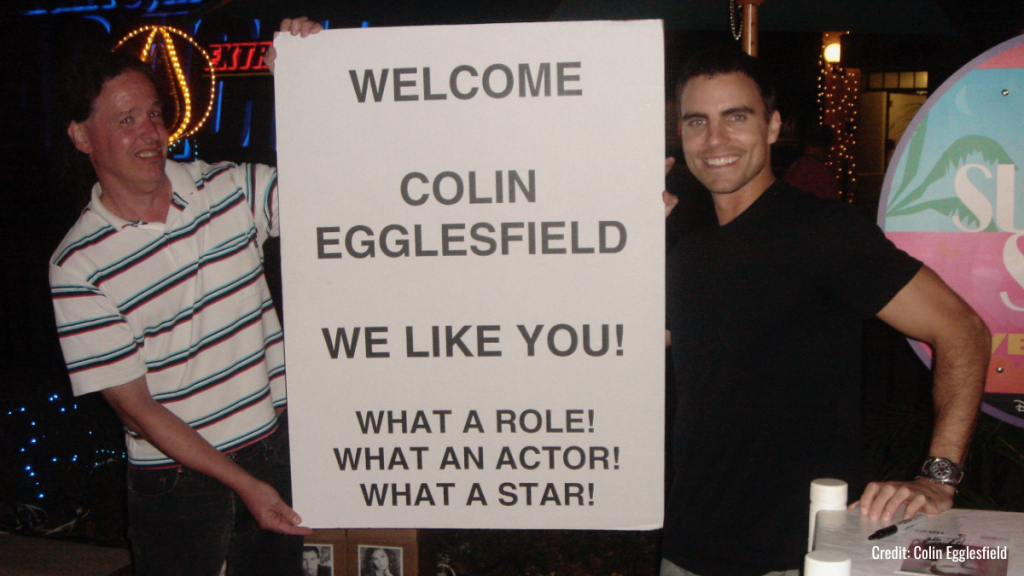
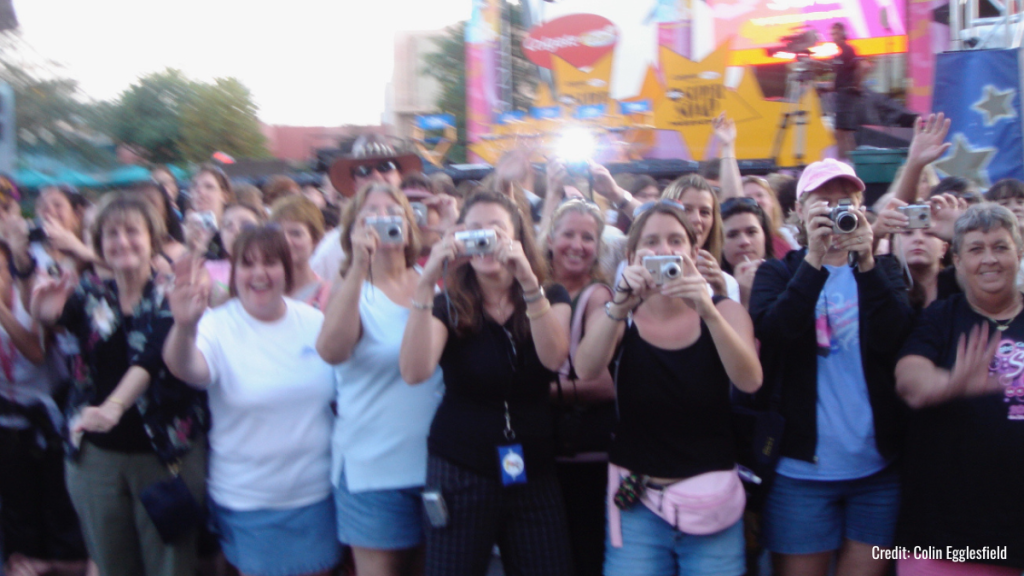

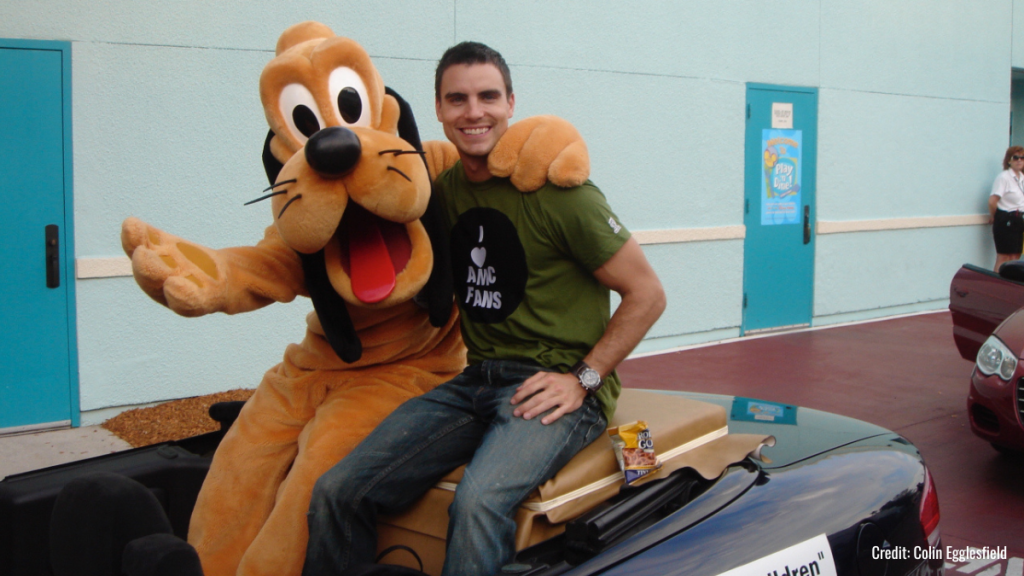
West Coast Events and the ABC Soap Opera Bistro
Disney even tried to recreate the event out west. Two Super Soap Weekends were held at Disneyland Resort, one in April 2002 and another in June 2003.
At Disney’s California Adventure, Eisner also introduced the ABC Soap Opera Bistro, a themed dining experience that opened in February 2001. Guests could dine inside recreated sets from shows like General Hospital and All My Children, including Kelly’s Diner and the Chandler Mansion. The Bistro closed in November 2002, but for fans, it offered a rare opportunity to step into the world of their favorite soaps.
SOAPnet, Port Charles, and the Expansion of Daytime TV at Disney
Eisner’s enthusiasm for soaps extended beyond the parks. In January 2000, he launched SOAPnet, a cable channel dedicated to prime time replays of ABC’s daytime dramas.
During his time at Disney, General Hospital also received a spin-off series titled Port Charles, which aired from June 1997 to October 2003. The show leaned into supernatural plotlines and was another example of Eisner’s commitment to evolving and expanding the soap genre.
The Final Curtain for Super Soap Weekend
In September 2005, Eisner stepped down after 21 years as head of The Walt Disney Company. Bob Iger, who had previously served as President of ABC and Chief Operating Officer of ABC/Cap Cities, took over as CEO. While Iger had deep ABC credentials, he didn’t share Eisner’s passion for daytime television.
In the fall of 2008, Disney hosted the final Super Soap Weekend at what was then still called Disney-MGM Studios. That same year, the park was rebranded as Disney’s Hollywood Studios, and Disney began shifting away from television-focused experiences.
Within the next five years, the rest of Eisner’s soap legacy faded. One Life to Live was canceled in January 2012. SOAPnet was rebranded as Disney Junior in February 2013. Later that year, All My Children ended its 41-year run on ABC.
Only General Hospital remains on the network today, the last standing soap from the golden age of ABC Daytime.
A New Chapter for Daytime TV and Super Soap Fans
The soap genre may have faded from its former glory, but it’s not gone. On February 24, 2025, CBS premiered a brand-new daytime drama called Beyond the Gates, marking the first new soap launch in years.
Meanwhile, All My Children alum Kelly Ripa has been actively working on a revival. In September 2024, she mentioned a holiday-themed movie set in Pine Valley that would bring back many original cast members. The project was in development for Lifetime, though its current status is unclear.
And what about Super Soap? Fans like Nancy and Angela still hope Disney will bring it back. Even if it only featured the cast of General Hospital, it would be a welcome return for longtime viewers who miss that one weekend a year where the magic of Disney collided with the drama of daytime TV.
If you want to hear firsthand what it was like to be part of Super Soap Weekend, be sure to listen to our I Want That Too podcast interview with actor Colin Egglesfield. He shares behind-the-scenes memories from his days as Josh Madden on All My Children and what it meant to be part of one of the most unique fan events in Disney park history.
History
The Super Bowl & Disney: The Untold Story Behind ‘I’m Going to Disneyland!’

One of the highlights of the Super Bowl isn’t just the game itself—it’s the moment when the winning quarterback turns to the camera and exclaims, “I’m going to Disney World!” This now-iconic phrase has been a staple of post-game celebrations for decades. But where did this tradition begin? Surprisingly, it didn’t originate in a stadium but at a dinner table in 1987, in a conversation involving Michael Eisner, George Lucas, and aviation pioneers Dick Rutan and Jeana Yeager.
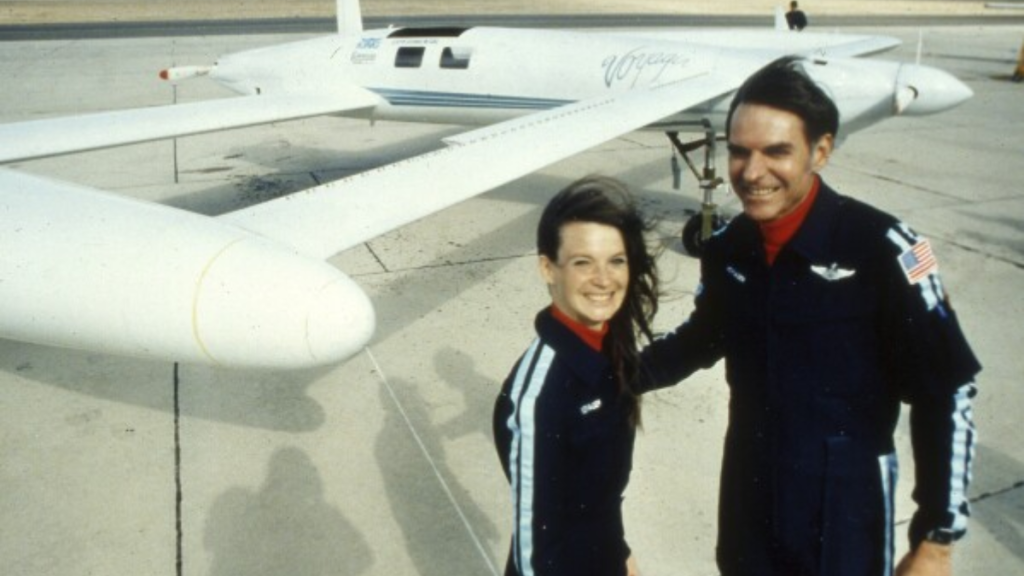
The Unlikely Beginning of a Marketing Sensation
To understand the origins of this campaign, we have to go back to December 1986, when the Rutan Voyager became the first aircraft to fly around the world without stopping or refueling. Pilots Dick Rutan and Jeana Yeager completed the nine-day journey on December 23, 1986, flying over 26,000 miles before landing at Edwards Air Force Base. Their historic achievement earned them national recognition, and just days later, President Ronald Reagan awarded them the Presidential Citizen Medal at the White House.
Meanwhile, Disney was gearing up for the grand opening of Star Tours at Disneyland, set for January 12, 1987. Following its usual playbook of associating major theme park attractions with real-world pioneers, Disney’s PR team invited astronauts Gordon Cooper and Deke Slayton to the launch event. But in a twist, they also invited Rutan and Yeager, who were still making headlines.

A Dinner Conversation That Changed Advertising Forever
After the Star Tours opening ceremony, a private dinner was held with Disney CEO Michael Eisner, George Lucas, and Eisner’s wife, Jane. During the meal, Eisner asked Rutan and Yeager, “You just made history. You traveled non-stop around the planet on a plane without ever refueling. How are you ever going to top that, career-wise? What are you two gonna do next?”
Without hesitation, Jeana Yeager replied, “Well, after being cramped inside that tiny plane for nine days, I’m just glad to be anywhere else. And even though you folks were nice enough to fly us here, invite us to your party… Well, as soon as we finish eating, I’m gonna go over to the Park and ride some rides. I’m going to Disneyland.”
Jane Eisner immediately recognized the power of Yeager’s statement. On the car ride home, she turned to Michael and said, “That’s a great slogan. I think you should use that to promote the theme parks.” Like many husbands, Michael initially dismissed the idea, but Jane persisted. Eventually, Eisner relented and pitched it to his team.
The Super Bowl Connection
With Super Bowl XXI just around the corner, Disney’s PR team saw an opportunity. The game was set for January 25, 1987, at the Rose Bowl in Pasadena—just miles from Disney Studios. What if they convinced the winning quarterback to say, “I’m going to Disneyland” live on-air?
Disney quickly struck a deal with both quarterbacks—Phil Simms of the New York Giants and John Elway of the Denver Broncos—offering each $75,000 to deliver the line if their team won. Simms led the Giants to victory, making history as the first athlete to say, “I’m going to Disney World!” on national television.
A Marketing Triumph
That year’s Super Bowl had the second-highest viewership in television history, with 87 million people watching Simms say the famous line. The next day, Disney turned the clip into a national commercial, cementing the phrase as a marketing goldmine.
Since then, “I’m going to Disneyland” (or Disney World, depending on the commercial) has been a staple of championship celebrations, spanning the NFL, NBA, and even the Olympics. What started as a casual remark at dinner became one of the most successful advertising campaigns in history.
A Lasting Legacy
Jane Eisner’s keen instinct and Disney’s ability to act quickly on a great idea created a tradition that continues to captivate audiences. The “I’m going to Disneyland” campaign remains a testament to the power of spontaneous inspiration and smart marketing, proving that sometimes, the best ideas come from the most unexpected places.
To learn more about Disney’s ties to the world of sports, check out I Want That Too: A Disney History and Consumer Product Podcast.
Television & Shows
How the Creators of South Park Tricked A-List Celebrities to Roast Universal – “Your Studio & You”
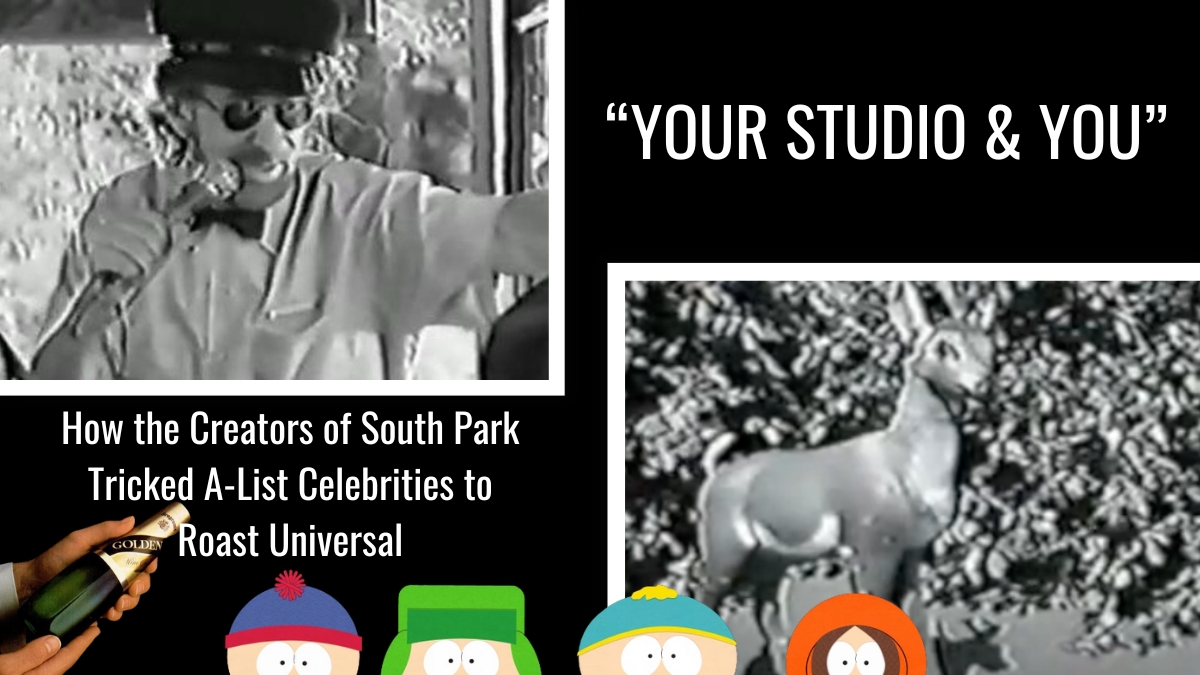
Universal Studios has a rich and storied history, but few moments are as peculiar—and as hilariously cutting—as the creation of Your Studio & You. This 14-minute parody film, commissioned in 1995 to celebrate Universal’s new ownership under Seagram’s, brings together an all-star cast, biting humor, and the unmistakable comedic fingerprints of Matt Stone and Trey Parker.
Long before South Park debuted on Comedy Central in 1997, Stone and Parker were already carving out a reputation for their irreverent style, and Your Studio & You perfectly encapsulates their knack for turning even the most corporate project into something delightfully subversive.
Matt Stone & Trey Parker Before South Park
Stone & Parker were already known out in Hollywood as funny guys. Thanks largely to “The Spirit of Christmas,” which was this video greeting card that they’d crafted for a Fox executive – who then distributed this infamously funny thing (which had Our Lord Jesus Christ & Santa Claus literally duking it out for the holiday affections of Cartman, Kenny, Stan & Kyle) to friends & family.
This was the early 1990s. No internet. Each copy of “The Spirit of Christmas” was made on VHS tape and then mailed. Went viral the old-fashioned way. It’s rumored that George Clooney made over 300 copies of “The Spirit of Christmas” and passed these VHS taps along to friends and family.
Things didn’t move as fast as they do today. “The Spirit of Christmas” still became a sensation out West.
Zucker Brothers
Matt & Trey also had other supporters in the entertainment industry. Among them David Zucker, who was one of the members of ZAZ (i.e., Zucker Abrahams Zucker), the talented trio that made “Airplane!” in 1980, “Top Secret!” in 1984 and the three “Naked Gun” movies.
- The original “Naked Gun” in 1988
- “Naked Gun 2 & 1/2 : The Smell of Fear” in 1991
- and “Naked Gun 33 & a 1/3: The Final Insult” in 1994
All five of these parody films had been made for Paramount Pictures. But in the Late Winter / Early Spring of 1995, Universal had persuaded the Zucker Brothers to come over and set up shop in a bungalow on their lower lot. With the hope that – at some point further on down the line – David & his brother Jerry would start making funny films for Universal.

And it’s during this same window of time (We’re now talking April of 1995) that news breaks that Seagrams (Yep, the adult beverage company. Who – at the time – was making an absolute fortune on the sales of wine coolers) was about to buy a majority stake in MCAUniversal. We’re talking control of 80% of that company’s stock. Which would effectively make Seagrams the new owners of Universal Studios.
Edgar Bronfman
And Edgar Bronfman – the owner of Seagrams – knew that Universal had had a tough time with its previous owners – which had been the Matsushita Electric Industrial Co. of Japan. Matsushita had bought MCA back in November of 1990 for $7.5 billion but had never really understood the entertainment industry.
This is why – after repeatedly butting heads with Lew Wasserman & Sidney Sheinberg (i.e., the heads of Universal Studios & the Universal theme park respectively) when it came to creative control of this company – Matsushita decided to wash it hands of the entire enterprise. Agreeing to sell their holdings in MCA to Seagrams for $5.7 billion (effectively taking a nearly $2 billion loss on this investment).
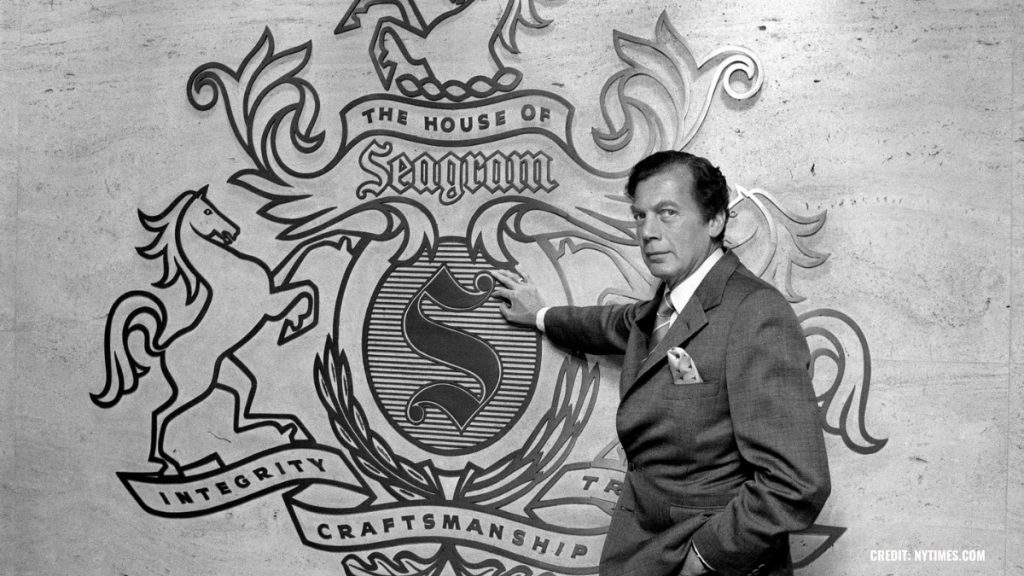
And Bronfman … He knew that some bad feeling had developed between Hollywood’s creative community and the Japanese owners of Universal. The thinking was that executives at Matsushita Electric had just not gotten what it took to make movies & TV shows.
And Edgar? Right from the get-go, he wanted to show that Seagrams was NOT going to be Matsushita Electric Redux. Bronfman was looking for a way to send a clear message to Hollywood’s creative community that Universal’s new owners got it. That they were willing to work with Hollywood to make the best possible movies & TV shows at Universal.
And how did Edgar decide to get this message across? By making a funny movie.
Zucker Commissions Trey Parker for “Your Studio & You”
Mind you, Bronfman himself didn’t make this film. The owner of Seagrams reached out to David Zucker. Who – after initially agreeing to produce this introduction-to-Universal film – then farmed out the production of the actual project to Trey Parker. Who – just two days before shooting was supposed to star on the Universal Lot – persuaded Matt Stone to come help him on this project.
Which brings us to “Your Studio and You.” Which is a parody of an educational film from the 1950s, right down to being shot in black & white and featuring a very generic soundtrack.
Now what’s amazing about watching “Your Studio and You” today is that this 14-minute-long film features some of the biggest names working in Hollywood back in the mid-1990s. We’re talking about people like recent Golden Globe winner Demi Moore, Sylvester Stallone, Michael J. Fox and Angela Lansbury. Not to mention two of the most powerful men in all of Hollywood, Steven Spielberg & Jeffrey Katzenberg.
And what’s especially interesting about watch “Your Studio and You” is that – as you watch these performers go through their paces in this motion pictures (which – most of the time – involves doing some innocuous task while holding a Seagram’s wine cooler) – you often get the feeling that this star is not in on the gag.
So how did Matt & Trey get away with this? Simple. There was never actually a script for “Your Studio and You.”
Filming “Your Studio & You” at Universal Studios Hollywood
Mind you, David Zucker would always insist that there was. Especially when he’d phone up celebrities on the Universal Lot and say “Hey, I’m sending over a couple of college kids later today. They’re working with me on a new parody film. It’s something that we’re doing for the new owners of Universal. I need just a half hour of your time. We’re shooting something special for the party we’ll be holding when the Seagrams people first arrive at the Studio. Absolutely. You’ll definitely get an invite to that party. So can I count on you to help these kids out? Beautiful. They’ll be over there later this morning.”
And then Matt & Trey would show up and say “… Dang, Miss Lansbury. We’re sorry. We must have left our copy of the ‘Your Studio and You’ script back in our office. Which is clear on the other side of the Lot. So – rather than waste your time – why don’t we do this instead? Follow us over to the Psycho House. Where we’re then going to get footage of you painting the front porch on Mother Bates’ house while you say ‘Gosh, with all of the wonderful improvements going on around here, everyone is going to want to work at Universal.’ Oh, and can we also get you to wear this button on the front of your blazer which reads ‘Universal is A-OK’ ? “
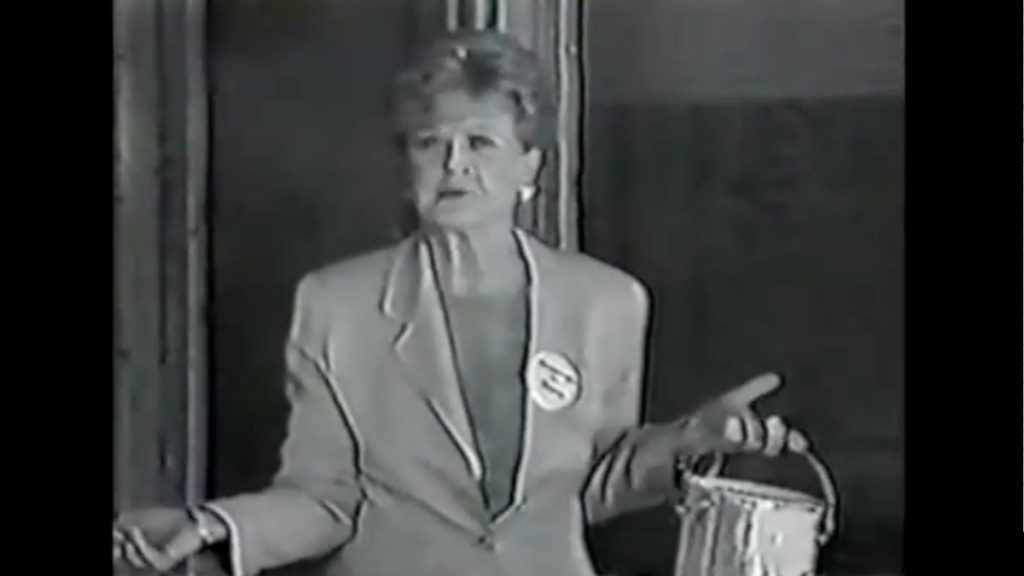
And over & over again, the biggest names who were working for Universal at that time took part in the production of “Your Studio & You” because A) David Zucker vouched for Matt Stone & Trey Parker and B) this was something that was being made for the new owners of Universal. And it’s just natural to want to get in good with the new boss.
Steven Spielberg, Jeffery Katzenberg, and Jaws
But no one at Universal anticipated that “Your Studio & You” would wind up being as sharp edged as the finished product turned out to be. I mean, it’s one thing to bite the hand that feeds you. But “Your Studio & You” ? It doesn’t just bite the hand. It takes the hand off at the wrist.
It’s a brutally funny film. With one of the meanest moments reserved for Steven Spielberg, who plays a driver on the Universal Studio Tour who’s trying to persuade a tram full of bored tourists (one of whom is played by Jeffery Katzenberg) that the “Shark Attack” scene down by Jaws Lagoon is actually exciting.
Spielberg actually says lines like “ … Whoa, whoa. What is going on here? Ladies and gentlemen, this never happens. Look out! It’s a shark! Whoa, that is one big scary shark.”
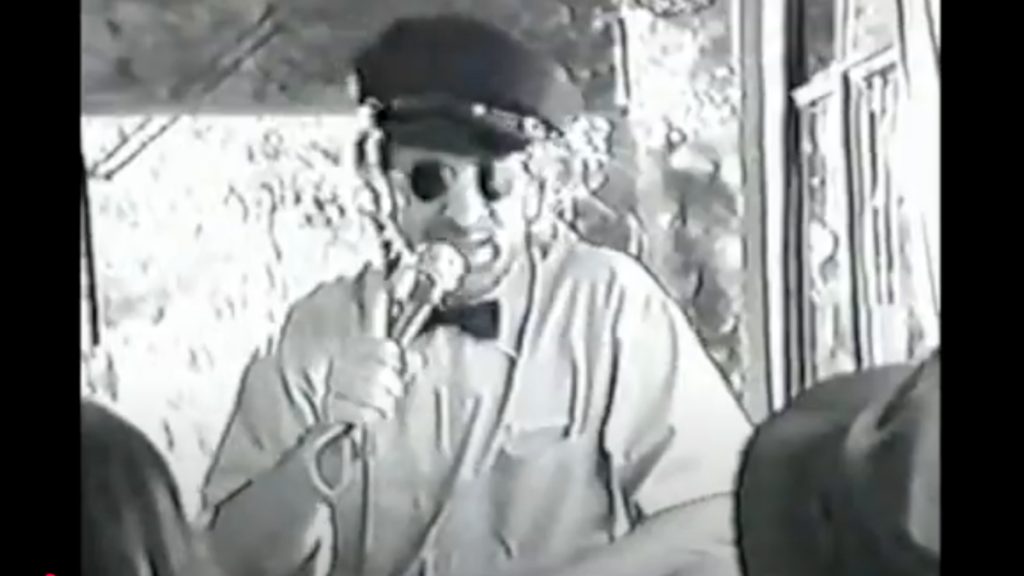
Mind you, as footage of this mechanical shark repeatedly coming up out of the water is shown, “Your Studio & You” ‘s off-screen narrator (who is voiced by Trey Parker says):
“But what about tomorrow? If we don’t keep in step with the times, things that were once neat and thrilling can become old and stupid.”
“Your Studio & You” Reception
This film was supposed to be shown only once at the welcoming party for Seagrams executive on the Universal Lot. And I’m told that – when Edgar Bronfman saw the finished product at that party – he reportedly turned to David Zucker and said “ … That’s a little more mean-spirited that I think it needed to be.”
And with that, “Your Studio & You” was supposed to go back into the Universal vault, never to be seen again. But when “South Park” debuted on Comedy Central in August of 1997 and then became a sensation for its biting humor, there was suddenly a lot of interest in what else Matt & Trey had done. Which is why copies of “The Spirit of Christmas” began to circulate. And – over time – copies of “Your Studio & You” began to bubble up.
Which – as Stone & Parker have repeatedly pointed out – was just not supposed to happen. Largely because none of the celebrities who appeared in “Your Studio & You” had never signed releases for Universal’s legal department. Because – again – this was for a movie that was only going to be shown once at a private function on the Universal Lot.
Matt mentioned (as part of a career retrospective at the Paley Center in LA back in 2000) that “ … they wouldn’t even let us keep a copy of the finished film.”
It’s a funny but brutal movie. And worth taking a look at today especially if you’re a theme park history buff because it shows Universal Studios Hollywood’s “Jurassic Park: The Ride” still under construction on the Lower Lot. That attraction would finally open to the public in June of 1996.
“Your Studio & You” became a lot easier to see after Seagrams sold off its share of Universal to Vivendi in 2000. Copies began propagating online after that. Though Universal Legal will periodically make an effort to get the latest copy of “Your Studio & You” taken off the Internet because – again – none of the performers who appear on camera ever signed the proper releases and/or were paid for their efforts.
That said, if you’re up for a mean-spirited laugh, “Your Studio & You” is well worth 14 minutes of your time. That said, once you watch this thing, be warned:
- You’re immediately going to be thirsty for a Seagram’s wine cooler
- And you’re going to have a sudden desire to go out & buy a porcelain deer.
-

 Theme Parks & Themed Entertainment7 months ago
Theme Parks & Themed Entertainment7 months agoDisney’s Forgotten Halloween Event: The Original Little Monsters on Main Street
-

 Theme Parks & Themed Entertainment8 months ago
Theme Parks & Themed Entertainment8 months agoThe Story of Mickey’s Not-So-Scary Halloween Party: From One Night to a Halloween Family Tradition
-
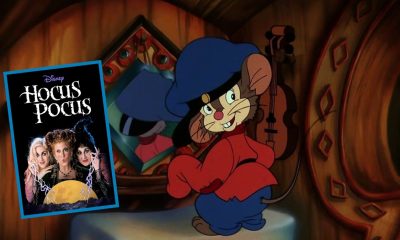
 Film & Movies7 months ago
Film & Movies7 months agoHow “An American Tail” Led to Disney’s “Hocus Pocus”
-
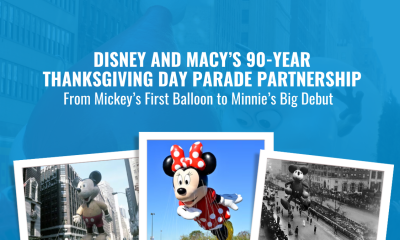
 Theme Parks & Themed Entertainment5 months ago
Theme Parks & Themed Entertainment5 months agoDisney and Macy’s 90-Year Thanksgiving Day Parade Partnership: From Mickey’s First Balloon to Minnie’s Big Debut
-

 Television & Shows4 months ago
Television & Shows4 months agoHow the Creators of South Park Tricked A-List Celebrities to Roast Universal – “Your Studio & You”
-

 History3 months ago
History3 months agoThe Super Bowl & Disney: The Untold Story Behind ‘I’m Going to Disneyland!’
-

 Podcast4 weeks ago
Podcast4 weeks agoEpic Universal Podcast – Aztec Dancers, Mariachis, Tequila, and Ceremonial Sacrifices?! (Ep. 45)
-
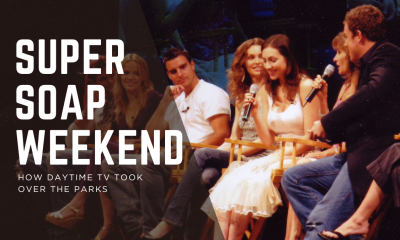
 Television & Shows4 days ago
Television & Shows4 days agoThe Untold Story of Super Soap Weekend at Disney-MGM Studios: How Daytime TV Took Over the Parks







